This is an opportunity for all of us, the readers, to understand the books of the Scripture, ‘The Holy Bible.’ According to Christian faith and tradition, ‘The Holy Bible’ is the revealed Word of God in written form. God revealed the Scripture to His chosen ones to record it and make it available for humanity. As Paul writes in 2 Timothy 3:16, “All Scripture is God-breathed and is useful for teaching, rebuking, correcting and training in righteousness.” The central theme of the Bible is carved out of God’s love and compassion, justice and judgement. The study of the Holy Bible will help us to understand the existence of God, the origin of this universe, the origin of the living and nonliving things in this universe, God’s plan and purpose for human life from the past, present and future perspectives.
The Holy Bible consists of 66 independent books. It took about 1,500 years (from B.C 1400 to A.D 100) and 40 authors from various walk of life to complete the whole Bible from Genesis to Revelation. The Bible is divided into two major divisions: The Old Testament and the New Testament (the term ‘Testament’ is translated as ‘Covenant’). The Old Testament contains thirty-nine books and the New Testament contains 27 books. The Old Testament and the New Testament are interconnected through their common message – the message about God’s love for humanity. For instance, if the Old Testament is taken as a foundation, then the New Testament is the superstructure on that foundation, or if the Old Testament is like a seed, the New Testament is the plant/tree. Without one, the other is incomplete. Jesus and the apostles used the Old Testament Scripture for their ministry. 2 Corinthians 3:15-17 states, “Even to this day when Moses is read, a veil covers their hearts. But whenever anyone turns to the Lord, the veil is taken away. Now the Lord is the Spirit, and where the Spirit of the Lord is, there is freedom.” The Old Testament records many of God’s promises and the New Testament is the fulfillment of those promises (however, some are yet to be fulfilled). According to Luke 24:44, Jesus said, “This is what I told you while I was still with you: Everything must be fulfilled that is written about me in the Law of Moses, the Prophets and the Psalms.”
The Old Testament, known as ‘The Hebrew Bible’ or ‘the Jewish Tanakh’ has three main divisions, and they are: (i) Torah – The Law, (ii) Nevi’im (or Nebhim) – The Prophets, and (iii) Ketuvim – The Writings (see the Old Testament diagram below).
(i) Torah is comprised of the first five books (known as ‘The Five Books of Moses’):
Genesis
Exodus
Leviticus
Numbers, and
Deuteronomy;
(ii) Nevi’im or Nebhim is comprised of 8 books, under two sub-divisions:
(a) The Former Prophets:
Joshua
Judges
Samuel, and
Kings
(b) The Latter Prophets:
Isaiah
Jeremiah
Ezekiel, and
the 12 Minor Prophets;
(iii) Ketuvim, is comprised of the remaining 11 books, under three sub-divisions:
(a)The Poetic Books:
Psalms
Proverbs, and
Job
(b)The Five Scrolls (Hamesh Megillot):
Song of Songs
Ruth
Lamentations
Ecclesiastes, and
Esther
(c)Three other Books:
Daniel
Ezra/Nehemiah, and
Chronicles.
According to the chronological order of the Hebrew Scripture, the first book is Bereshit (Genesis) and the last book is Divrei Hayamim (Chronicles).
The Division of Old Testament Scripture (Hebrew Bible)
Books of the Hebrew Scripture
Divisions of the Old Testament according to the Christian Bible in Chronological Order
The New Testament contains 27 books and is divided into four major divisions. They are as follows: the Gospels, the Historical Book, the Epistles, and the Prophetical Book.

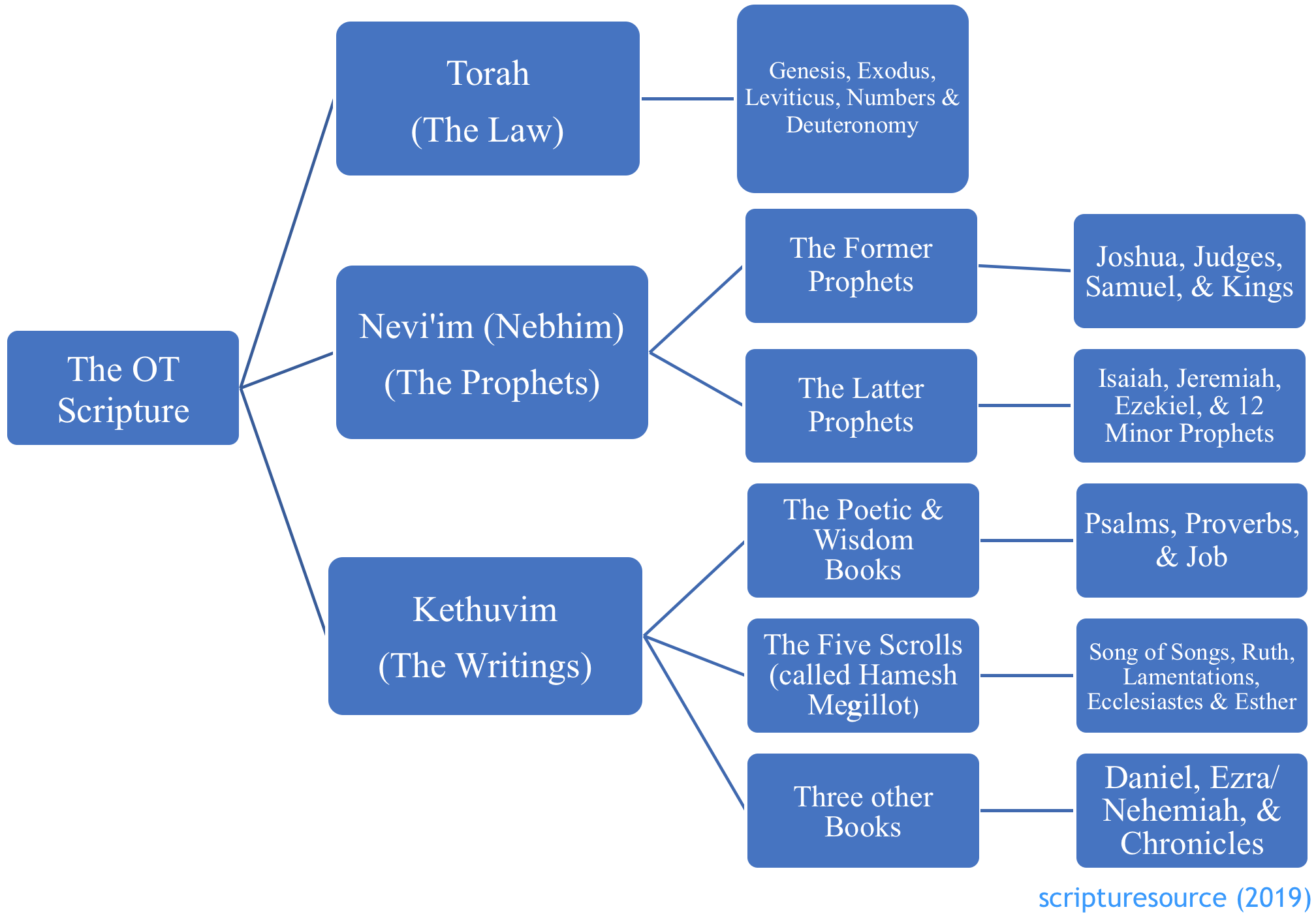
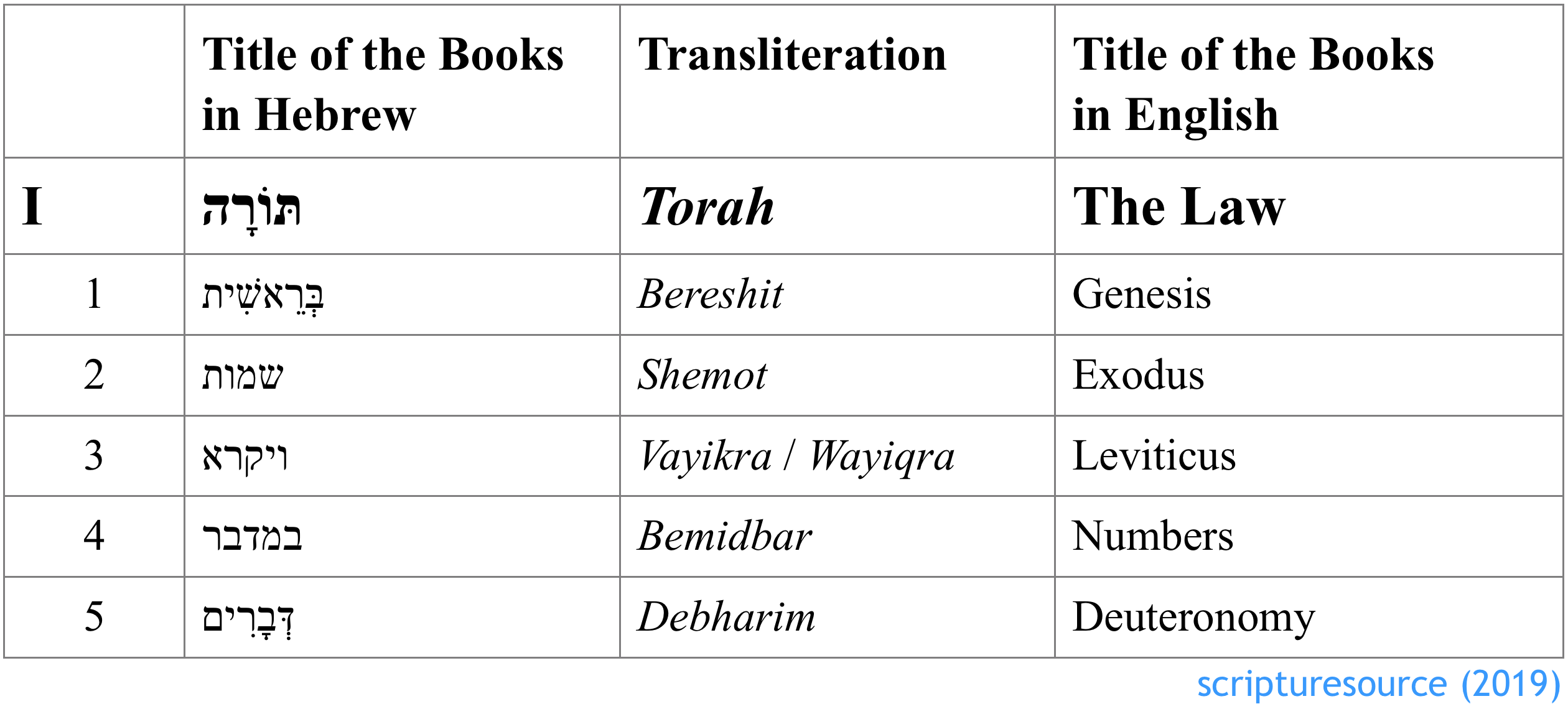
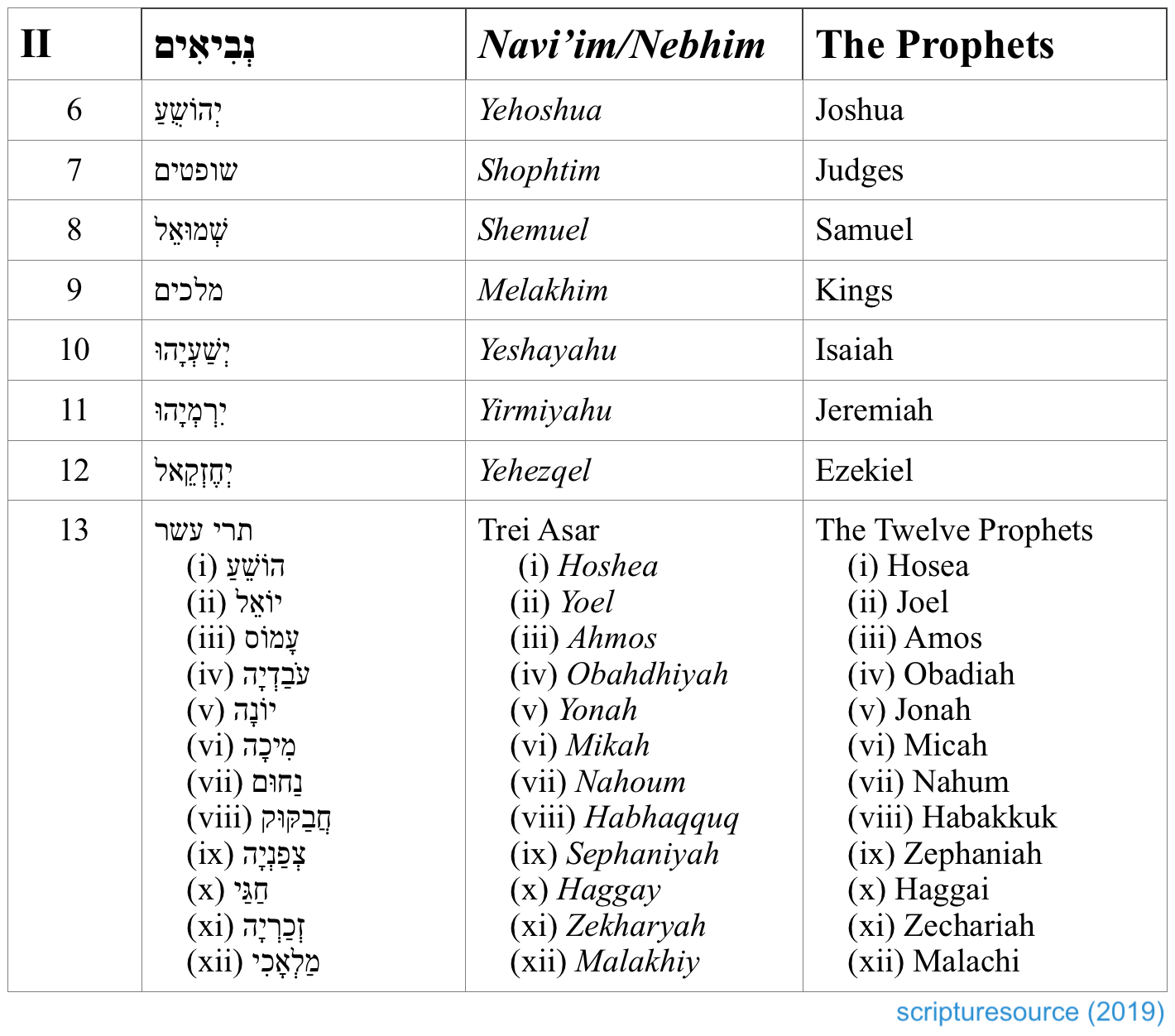
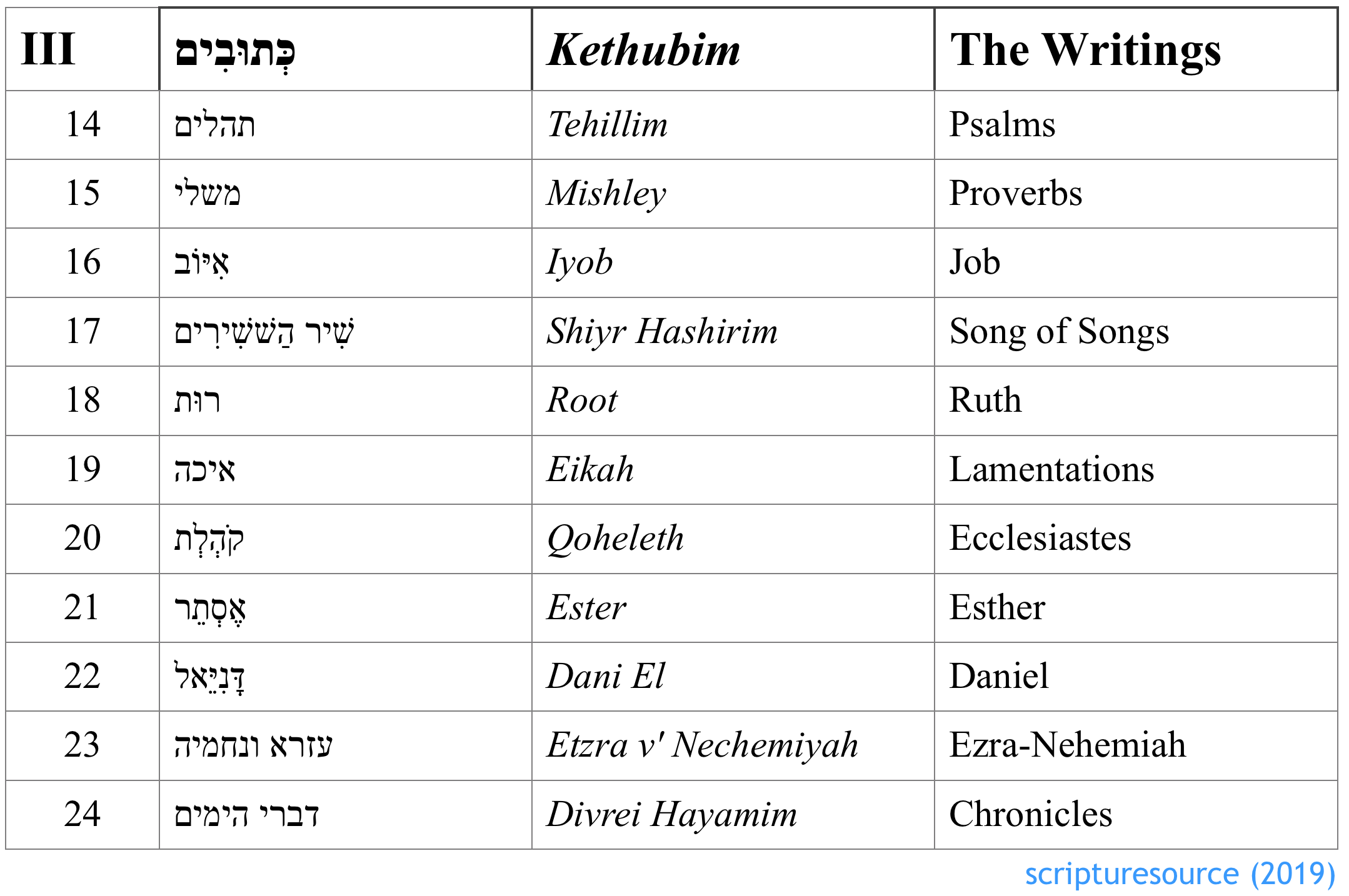
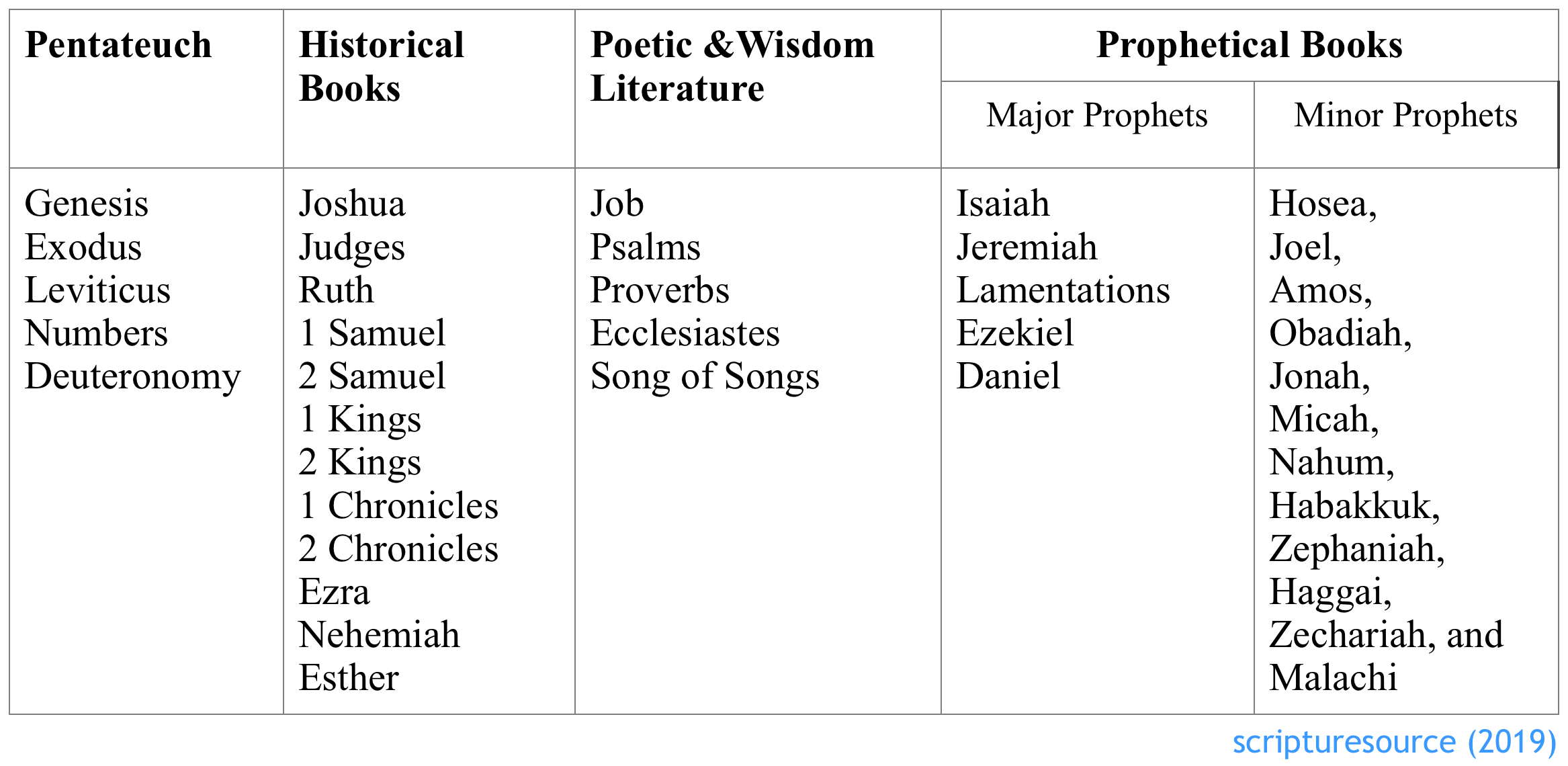
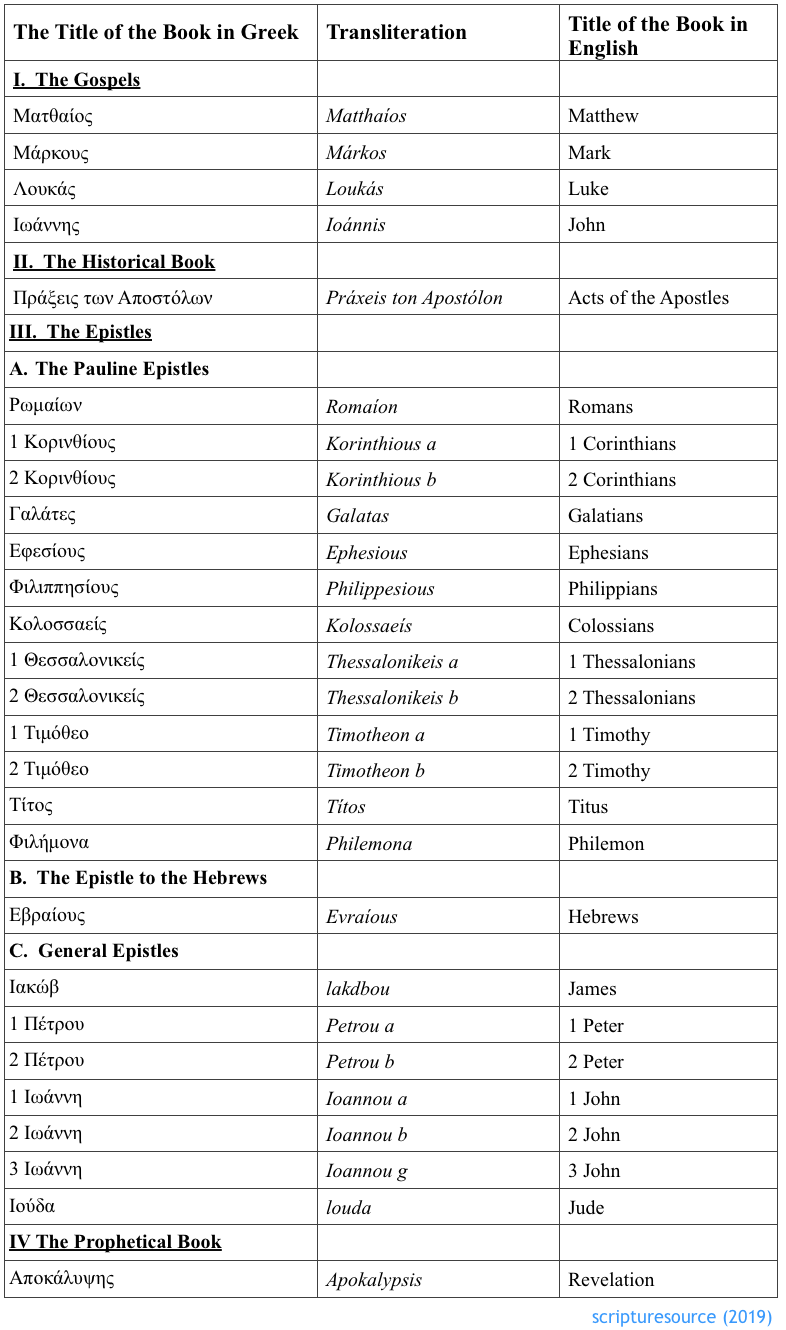

Looks like the Hebrew names for Joshua and Isaiah are mixed up on chart II. However, this is one of the best charts I’ve found, so I printed it out. Thanks for posting it!
Hi Dennis, glad you found the chart to be useful! And thank you so much for the heads up about the Hebrew names of Joshua and Isaiah. They have now been updated on chart II. Blessings!
I agree with Dennis… this is one of the BEST charts I have found and have been able to print it out. It really helps when trying to read and learn from Hebrew Ancient [Block] Script Bible. (Just on my own, mind you, so no scholar here of any degree). But Thank you MUCH for going to this trouble. It is extremely helpful to me!
Hi George, so great to hear the chart has been a helpful resource! All Glory to God!